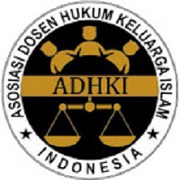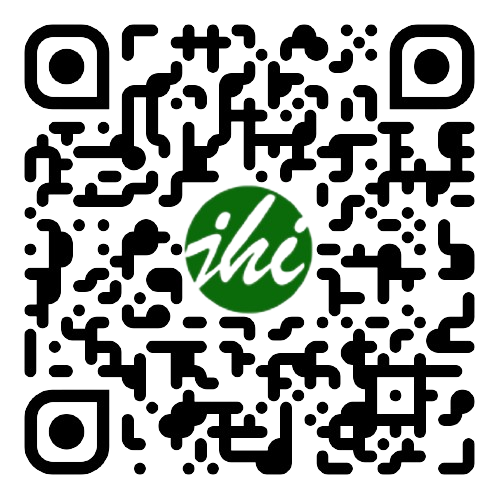The Norm of Rate Fixing of Islamic Banks Based on Conventional Bank Rates: Evidence from Indonesia
DOI:
https://doi.org/10.28918/jhi_v21i2_05Keywords:
Public Welfare, Rate Fixing, Rate of Islamic BanksAbstract
Interest rate fixing is a monetary tool used to control the money supply and hence inflation by the central bank. However, it cannot be applied to Islamic banks due to the prohibition of interest in Islam. This paper examines whether the central bank may implement rate fixing for Islamic banks, given that interest is forbidden, and the fixing of prices by the government is also generally prohibited, according to Hadith and the consensus of Islamic jurists. A documentation study was conducted to comprehend the viewpoints of classical and contemporary Islamic jurists and the National Shariah Board−Indonesian Ulama Council's fatwa. The analysis used Islamic law methodology (uşūl fiqh), which included combining the opinions of classical and contemporary Islamic jurists through the al-jam’u and the legal maxim approach, "al-‘ādah muhakkamah" approach to the custom practiced by Islamic banks, and the maqāşid approach. The research findings illustrate that Islamic banks have been using rates to calculate profits as the National Shariah Board−Indonesian Ulama Council accepts the notion of the time value of money, provided it is not utilized in loan transactions. This condition could enable the central bank to set the rates for Islamic banks, which is an effective tool for controlling the money supply and achieving economic stability, thus contributing to the realization of community welfare (maslahah 'ammah).
References
Adam, Ainee. “Pricing and Profiting in Copyright: Introducing an Islamic Perspective.” Queen Mary Journal of Intellectual Property 10, no. 2 (2020): 152–78.
Ahmad, Abu Umar Faruq, and M. Kabir Hassan. “The Time Value of Money Concept in Islamic Finance.” The American Journal of Islamic Social Sciences 23, no. 1 (2006): 66–89.
Al-Fairūzabadī, Majd al-Dīn Abū Ţāhir Muhammad ibn Ya’qūb. Tanwīr Al-Miqbās Min Tafsīr Ibn Abbās. Libanon: Dār al-Kutub al-‘Ilmiyyah, n.d.
Al-Kāsānī, Ala`uddin Abū Bakr ibn Mas’ūd. Badā`i’ Al-Şanā`i’. Vol. 7. Beirut: Dār al-Kutub al-‘Ilmiyyah, 2003.
Al-Khilaifī, Riyāḍ Manşūr. “Al-Maqāşid Al-Syar’iyyah Wa Aśaruhā Fī Fiqh Al-Mu’āmalāt Al-Māliyah.” Majallah Jāmi’ah Al-Malik ‘Abd Al-‘Azīz: Al-Iqtişād Al-Islāmī 17, no. 1 (2004): 3 – 49.
Al-Maşrī, Rafiq Yunus. Al-Ribā Wa Al-Ḥasm Al-Zamanī Fī Al-Iqtişād Al-Islāmī. Damaskus: Dār al-Maktabī, 2009.
Al-Nawawī, Abū Zakariyyā Muḥyiddīn ibn Syaraf. Kitāb Al-Majmū’ Syarh Al-Muhażżab. Vol. 6. Beirut: Dār al-Fikr, n.d.
Al-Syāfi’ī, Muhammad ibn Idrīs. Al-Umm. Vol. 3. Beirut: Dār al-Ma’rifah, 1990.
Al-Ţabarī, Abū Ja’far. Jāmi’ Al-Bayān Fī Ta`wīl Al-Qur`an. Vol. 6. Mu`assasah al-Risālah, 2000.
Al-Zuhailī, Wahbah. Al-Fiqh Al-Islāmī Wa Adillatuhu. Damaskus: Dār al-Fikr, 1985.
Alaoui, Abdelkader O El, Hashim Bin Jusoh, Sheila Ainon Yussof, and Mohamed Hisham Hanifa. “Evaluation of Monetary Policy: Evidence of the Role of Money from Malaysia.” The Quarterly Review of Economics and Finance 74 (2019): 119–28. https://doi.org/https://doi.org/10.1016/j.qref.2019.04.005.
Aysan, Ahmet F, Mustafa Disli, Meryem Duygun, and Huseyin Ozturk. “Religiosity versus Rationality: Depositor Behavior in Islamic and Conventional Banks.” Journal of Comparative Economics 46, no. 1 (2018): 1–19. https://doi.org/https://doi.org/10.1016/j.jce.2017.03.001.
Ayub, Muhammad, and M. Fahim Khan. “Evolving Monetary Economics in Islamic Perspective.” Journal of Islamic Monetary Economics and Finance 7, no. 2 (2021): 317–40.
Azad, A.S.M.S., Saad Azmat, Abdelaziz Chazi, and Amirul Ahsan. “Can Islamic Banks Have Their Own Benchmark?” Emerging Markets Review 35 (2018): 120–36. https://doi.org/https://doi.org/10.1016/j.ememar.2018.02.002.
Baehaqi, Ahmad, M. Nur A. Birton, and Fahmi Ali Hudaefi. "Time value of money in Islamic accounting practice: a critical analysis from maqāṣid al-Sharī ‘ah." Journal of Islamic Accounting and Business Research 11.9 (2020): 2035-2052. https://doi.org/10.1108/JIABR-09-2018-0155
Bank Indonesia. “Moneter.” Bank Indonesia, 2020. https://www.bi.go.id/id/fungsi-utama/moneter/default.aspx.
Bräuning, Falk, and Victoria Ivashina. "US monetary policy and emerging market credit cycles." Journal of Monetary Economics 112 (2020): 57-76. https://doi.org/10.1016/j.jmoneco.2019.02.005
Chong, Beng Soon, and Ming-Hua Liu. “Islamic Banking: Interest-Free or Interest-Based?” Pacific-Basin Finance Journal 17, no. 1 (2009): 125–44. https://doi.org/https://doi.org/10.1016/j.pacfin.2007.12.003.
Ercan, Harun, Ilhami Karahanoglu, and György Walter. “Is Islamic Banking in Turkey Really Interest-Free?” Society and Economy 43, no. 4 (2021): 391–405.
Ergeç, E H, and B G Arslan. “Impact of Interest Rates on Islamic and Conventional Banks: The Case of Turkey.” Applied Economics 45, no. 17 (June 1, 2013): 2381–88. https://doi.org/10.1080/00036846.2012.665598.
Fakhrina, Agus. “Kebebasan Ekonomi Vis a Vis Intervensi Negara: Perspektif Ibn Khaldun.” Jurnal Penelitian 14, no. 1 (2017): 39–54.
Hassan, Zubair. “Profit Sharing Ratios in Mudaraba Contract.” International Journal of Banking and Finance 7, no. 1 (2010): 1–19.
Huda, Eva Nurul, and Sahabudin Sidiq. “Cooking Oil Price Control Policy in Indonesia (A Review of Ibn Taimiyah’s Thoughts).” Reinforce: Journal of Shariah Management 2, no. 1 (2023): 30–49. https://doi.org/https://doi.org/10.21274/reinforce.v2i1.7313.
IbnTaimiyyah, Taqiyyuddin Abū al-‘Abbas Aḥmad ibn Abd al-Halim ibn Abd al-Salām ibn Abdillah ibn Abī al-Qāsim ibn Muhammad. Majmū’ Al-Fatāwā. Vol. 28. Madinah: Majma’ al-Malik Fahd li Ţabā’ah al-Muşhaf al-Syarīf, 1995.
Islahi, Abdul Azim. Economic Consepts of Ibn Taimiyah. Leicester: The Islamic Foundation, 1996.
Inoue, Atsushi, and Barbara Rossi. "The effects of conventional and unconventional monetary policy on exchange rates." Journal of International Economics 118 (2019): 419-447. https://doi.org/10.1016/j.jinteco.2019.01.015.
Kahf, Monzer. “Time Value of Money and Discounting in Islamic Perspective: Revisited.” Review of Islamic Economics 3, no. 2 (1994): 31–38.
Khan, M. Fahim. “Time Value of Money and Discounting in Islamic Perspective.” Review of Islamic Economics 1, no. 2 (1991): 35–45.
Kusuma, Kumara Adji, Nyong Eka Teguh Iman Santosa, Djoko Mursinto, and Muhamad Nafik Hadi Ryandono. “Profit Sharing Ratio Determination of Mudharabah Contract in Indonesia Islamic Banks.” Opcion 34, no. 85 (2018): 2804–2813.
Lusiana, Lusiana, and Gita Astrid. “The Indonesian Government’s Intervention In Market Pricing (Ceiling Price And Floor Price) Reviewed In Islamic Economic Perspective.” Nurani: Jurnal Kajian Syari’ah Dan Masyarakat 20, no. 1 (2020): 57–66. https://doi.org/https://doi.org/10.19109/nurani.v20i1.6064.
Maliha, Hasna, and Aam Slamet Rusydiana. “Al-Maqrizi Views on Economic Inflation.” Islamic Economic and History 1, no. 1 (2022). https://doi.org/https://doi.org/10.58968/ieh.v1i1.189.
Maulidizen, Ahmad. “Economic Thought of Ibn Taimiyah and Relevance to the World Economic and Community Economic System.” ESENSIA: Jurnal Ilmu-Ilmu Ushuluddin 20, no. 2 (2019): 131–46. https://doi.org/https://doi.org/10.14421/esensia.v20i2.2103.
Meslier, Céline, Tastaftiyan Risfandy, and Amine Tarazi. “Dual Market Competition and Deposit Rate Setting in Islamic and Conventional Banks.” Economic Modelling 63 (2017): 318–33. https://doi.org/https://doi.org/10.1016/j.econmod.2017.02.013.
Muhtadi, Ridan, and Safarinda Imani. “Al-Magrizi Inflation Theory Of Islamic Monetary Policy Implementation In Indonesia.” International Journal of Islamic Economics 2, no. 2 (2021): 150–60.
Musaddad, Hafirda Akma, Zairy Zainol, and Selamah Maamor. “Ibn Taimiyyah’s Thought on Price Regulation in Housing Affordability.” International Journal of Islamic Thought 22 (2022). https://doi.org/https://doi.org/10.24035/ijit.22.2022.237.
Nurfaizah, Khanifah. “Government Intervention in Determining Prices According to Ibn Taimiyah’s.” Airlangga International Journal of Islamic Economics and Finance 2, no. 2 (2019): 97–104.
Otoritas Jasa Keuangan. Statistik Perbankan Syariah. Jakarta: Otoritas Jasa Keuangan, 2023. https://www.ojk.go.id/id/kanal/syariah/data-dan-statistik/statistik-perbankan-syariah/Pages/Statistik-Perbankan-Syariah---Februari-2023.aspx.
Ponziani, Regi Muzio, and Tatik Mariyanti. “Islamic Banks and Monetary Policy : The Case of Indonesia.” IJIEF: International Journal of Islamic Economics and Finance 3, no. January (2020): 121–42. https://doi.org/10.18196/ijief.2124
Rahman, Md Habibur, and Raja Nur Afini Bt Raja Ismail. “Profit Maximization versus Price Ceiling from Maqasid Al-Shari’ah Perspective: A Wasatiyyah Approach.” The Journal of Management Theory and Practice (JMTP) 4, no. 1 (2023): 1–7. https://doi.org/https://doi.org/10.37231/jmtp.2023.4.1.255.
Rida, Muhammad Rasyīd. Tafsīr Al-Manār. Vol. 3. Mesir: Mesir Dār al-Manār, 1947.
Rashid, Abdul, M. Kabir Hassan, and Muhammad Abdul Rehman Shah. "On the role of Islamic and conventional banks in the monetary policy transmission in Malaysia: do size and liquidity matter?." Research in International Business and Finance 52 (2020): 101123. https://doi.org/10.1016/j.ribaf.2019.101123
Saeed, Abdullah. Islamic Banking and Interest: A Study of the Prohibition of Riba and Its Contemporary Interpretation. Netherland: Brill, 1996.
Saeed, Shifa Mohamed, Islam Abdeljawad, M Kabir Hassan, and Mamunur Rashid. “Dependency of Islamic Bank Rates on Conventional Rates in a Dual Banking System: A Trade-off between Religious and Economic Fundamentals.” International Review of Economics & Finance 86 (2023): 1003–21. https://doi.org/https://doi.org/10.1016/j.iref.2021.09.013.
Salman, Ali. “The Libertarian Character of the Islamic Economy.” Economic Affairs 33, no. 1 (2013): 108–18.
Siddique, Muhammad Abubakar, and Memoona Rahim. “The Concepts of Discounting and Time Value of Money in Islamic Capital Budgeting Framework: A Theoretical Study.” Journal of Islamic Banking and Finance, Pakistan 32, no. 1 (2015): 23–29.
Siddique, Muhammad Abubakar, and Muhammad Zahid Siddique. “Intrinsically Irreconcilable: The Case against Running Musharakah as Employed by Islamic Banks.” Borsa Istanbul Review 22, no. 5 (2022): 861–72. https://doi.org/https://doi.org/10.1016/j.bir.2022.06.003.
Sudarsono, Heri, and Miranti Aprilia Saputri. “The Effect of Financial Performance toward Profit-Sharing Rate on Mudharabah Deposit of Shariah Banking in Indonesia.” Muqtasid: Jurnal Ekonomi Dan Perbankan Syariah 9, no. 1 (2018): 82–92.
Uddin, Md Akther, Abu Umar Faruq Ahmad, and Fatima El Morabit. “Is Interest Rate Suitable as a Monetary Policy Instrument for OIC Countries?” In Monetary Policy, Islamic Finance, and Islamic Corporate Governance: An International Overview, 113–26. Bingley: Emerald Publishing Limited, 2021. https://doi.org/https://doi.org/10.1108/978-1-80043-786-920211007.
Uddin, Md Akther, and Asyraf Halim. “Islamic Monetary Policy: Is There an Alternative of Interest Rate?,” 2015. https://mpra.ub.uni-muenchen.de/67697/.
Yusof, Rosylin Mohd, Mejda Bahlous, and Hamza Tursunov. “Are Profit Sharing Rates of Mudharabah Account Linked to Interest Rates? An Investigation on Islamic Banks in GCC Countries.” Jurnal Ekonomi Malaysia 49, no. 2 (2015): 77–86. https://doi.org/http://dx.doi.org/10.17576/JEM-2015-4902-07.
Zainal, Khairi. “Inflation : Lessons from Al-Maqrizi.” TAFHIM: IKIM Journal of Islam and the Contemporary World 13, no. 2 (2020): 85–113. https://tafhim.ikim.gov.my/index.php/tafhim/article/view/140.
Zulkhibri, Muhamed, and Raditya Sukmana. “Financing Channels and Monetary Policy in a Dual Banking System : Evidence from Islamic Banks in Indonesia.” Economic Notes: Review of Banking, Finance and Monetary Economics 9999, no. 9999 (2016): 1–27. https://doi.org/10.1111/ecno.12076
Downloads
Published
How to Cite
Issue
Section
License
Copyright (c) 2023 Agus Fakhrina

This work is licensed under a Creative Commons Attribution-ShareAlike 4.0 International License.
Jurnal Hukum Islam use a variety of waivers and licenses that are specifically designed for and appropriate for the treatment of data:
- Open Data Commons Attribution License, http://www.opendatacommons.org/licenses/by/1.0/(default)
- Creative Commons CC-Zero Waiver, http://creativecommons.org/publicdomain/zero/1.0/
- Open Data Commons Public Domain Dedication and License, http://www.opendatacommons.org/licenses/pddl/1-0/
Other data publishing licenses may be allowed as exceptions (subject to approval by the editor on a case-by-case basis) and should be justified with a written statement from the author, which will be published with the article.



















.png)




